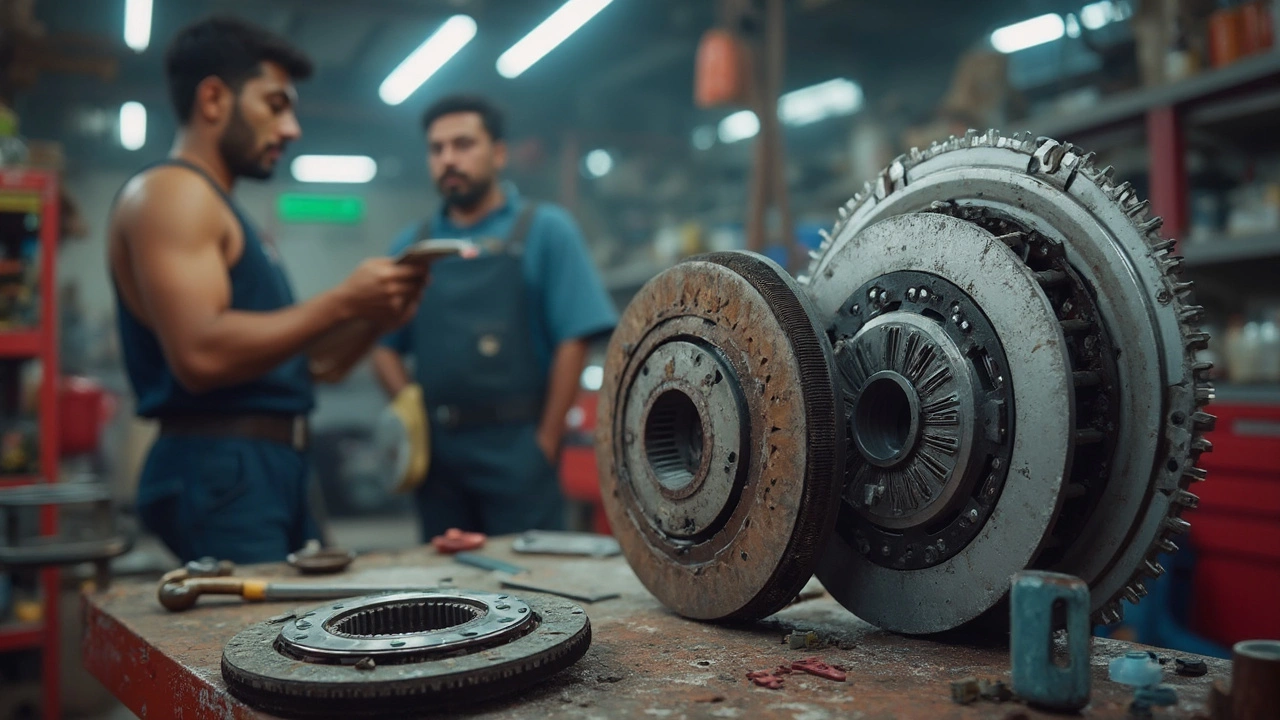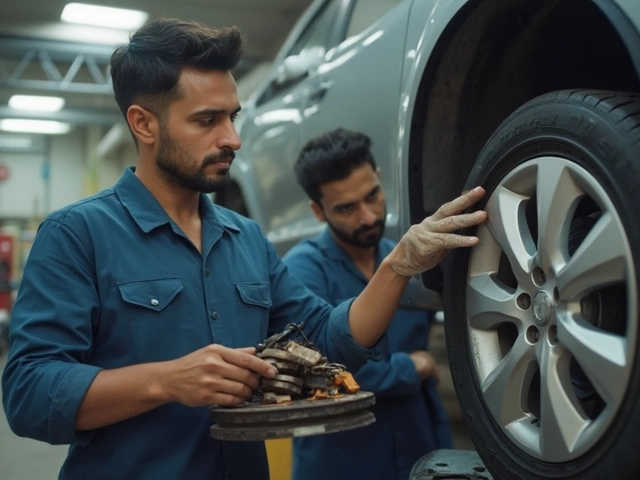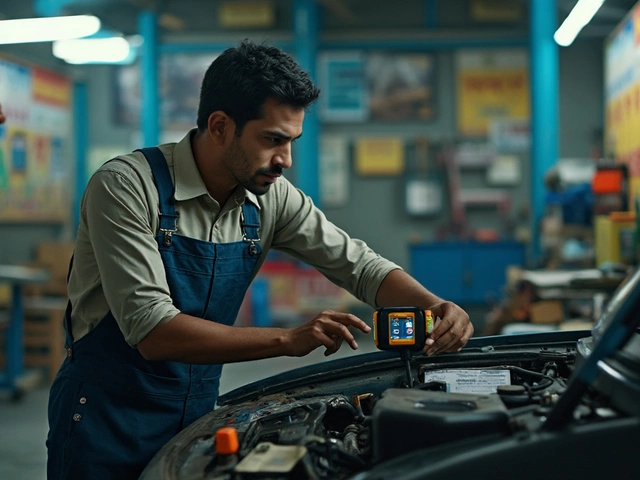Ever found yourself stumped, staring at your odometer, and wondering when your clutch might finally give up? You’re not alone. No two clutches seem to live exactly the same life—and the answer depends on more than just the car’s make and model.
On average, most folks can expect a clutch to last somewhere between 50,000 and 100,000 miles. But I’ve seen friends burn through a clutch by 30,000 miles, while others are still rolling strong at 120,000. A lot comes down to the way you drive and the kind of traffic you face every day. If you’re always stuck in rush-hour jams or you love aggressive starts, your clutch is in the danger zone—with a much shorter lifespan.
Replacement isn’t cheap, and ignoring clutch wear can turn a routine service into a much bigger headache. Knowing what to expect and how to spot issues early can actually save you time and cash down the road.
- Average Clutch Lifespan: What the Numbers Say
- What Really Impacts Clutch Life?
- Clear Signs Your Clutch is Wearing Out
- How to Make Your Clutch Last Longer
Average Clutch Lifespan: What the Numbers Say
Let’s cut straight to it—when you’re talking about how long a clutch should last, you’ll hear a pretty wide range, but there are some solid numbers out there. Most drivers with manual transmissions see their clutch hold up anywhere from 50,000 to 100,000 miles. But things aren’t always that simple. Plenty of folks run into problems a lot sooner, and a lucky few get way more miles than the average.
You don’t have to just take my word for it. Check out what the experts at AAA have to say:
"While a typical clutch will last 60,000 to 100,000 miles, mileage can vary widely depending on driving conditions and habits."
So, why do some clutches make it to 120,000 and others barely reach 30,000? It usually comes down to traffic, driver habits, the car’s weight, and what you’re towing—if anything.
| Clutch Lifespan (Miles) | What Affects It |
|---|---|
| 30,000 - 50,000 | Aggressive city driving, heavy stop-and-go, poor habits |
| 50,000 - 100,000 | Normal mixed driving, average traffic, reasonable care |
| 100,000+ | Gentle highway miles, light loads, solid technique |
Here’s the deal—if you’re constantly riding the clutch in bumper-to-bumper traffic or towing heavy stuff, don’t expect miracles. But if you stick to highways, drive smooth, and avoid bad habits, your clutch lifespan can surprise you in a good way.
What Really Impacts Clutch Life?
Your daily routine, where you drive, and even how you shift gears decide how long your clutch hangs in there. We’re talking about more than just an occasional mistake—it’s about habits that develop every time you grab the stick shift.
The main factor, no surprise, is your driving style. If you love quick getaways at every green light or rest your foot on the clutch pedal (even just a little), you're asking for trouble. Start-stop city driving is murder on clutches compared to highway cruising. Mountains and hilly roads? They demand more clutch work, so expect shorter lifespan. Also, towing stuff or hauling heavy loads puts extra strain on the whole system.
While some cars come with self-adjusting clutches meant to last longer, others just aren’t built for a tough life. Plus, older vehicles or certain models are infamous for eating clutches faster than usual. Keeping up with regular maintenance, like checking hydraulic fluid or fixing leaks, plays a role too.
- Riding the clutch pedal (keeping your foot on it slightly) wears it out fast.
- Shifting without letting the clutch engage/disengage properly damages the friction material.
- Stop-and-go traffic or frequent hill starts are hard on clutches.
- Towing and heavy loads seriously cut down the number of miles you get from your clutch.
- Lack of maintenance, like ignoring worn slave or master cylinders, speeds up clutch failure.
To give you a snapshot, here’s a quick table comparing factors and how much they usually affect clutch lifespan in miles—based on what mechanics and drivers say in the real world:
| Factor | Average Impact on Clutch Life |
|---|---|
| Gentle highway driving | 80,000 - 120,000 miles |
| City driving with frequent stops | 40,000 - 60,000 miles |
| Heavy towing/hauling | 30,000 - 50,000 miles |
| Aggressive shifting habits | 30,000 - 70,000 miles |
| Proper maintenance | Adds up to 20,000+ miles to clutch life |
The clutch kits you choose matter too. Cheap or poorly-fitted kits usually don’t last as long, so always go for ones that match your car and driving needs.

Clear Signs Your Clutch is Wearing Out
Okay, so how do you know the clutch is calling it quits? There are some classic symptoms you really can’t ignore. If you spot these early, you’re less likely to end up stranded or stuck with a bill that’ll make your wallet hurt. Let’s get straight to what matters.
Here’s what you want to watch for:
- Clutch lifespan feeling way too short—if your clutch is out at 30,000 miles, something’s off.
- The pedal feels spongy or loose, not firm like it should.
- You notice the engine revs shoot up when you hit the gas, but the car doesn’t speed up much (that classic ‘slipping’ feel).
- Shifting gears starts feeling crunchier than butter-smooth, especially into first or reverse.
- You smell something burning, especially after driving in traffic or on hills. That’s probably the clutch plate overheating.
- There’s a weird rattling or grinding noise when you press the clutch pedal down.
A study from AAA shows that most modern clutches last at least 70,000 miles with normal use. But if you’re noticing any of these signs, it’s time to get checked. Don’t wait for it to get worse.
“When you catch clutch problems early, the repair might just mean a new clutch disc. Ignore it too long, and the flywheel or pressure plate can become damaged, making it a lot pricier to fix.” – AutoZone Garage
Want a quick way to size up the problem? Try this: With the car in third gear, gently press the gas with the clutch fully out. If the engine revs climb but your speed stays the same, odds are your clutch is slipping and needs attention soon.
Here’s a look at how some of these symptoms line up with mileage, based on real-world shop data:
| Symptom | Common Mileage Range |
|---|---|
| Clutch Slipping | 50,000–80,000 miles |
| Burning Smell | Any mileage (after hard usage) |
| Rough Shifting | 60,000–100,000 miles |
| Spongy Pedal | 40,000–90,000 miles |
If you’ve checked off more than one sign, don’t gamble on it. Get your clutch looked at before you’re left calling a tow truck on a Monday morning. That’s never fun.
How to Make Your Clutch Last Longer
Want to squeeze every mile out of your clutch? It pays to change a few everyday driving habits. Reckless starts and bad habits will chew through a clutch lifespan way faster than you might think. Taking it easy isn’t just advice—there’s data behind it.
Here’s what you can actually do:
- Don’t ride the clutch: Keep your foot off the clutch pedal when you’re not shifting. Resting your foot there adds extra wear, even if it feels like nothing’s happening.
- Shift smoothly: Jamming the gear lever or rushing the shift just makes it harder for the clutch to do its job. Let the pedal up smooth and steady.
- Avoid holding the car on a hill using the clutch: It’s tempting, but using the clutch to keep you steady (instead of the brake) means you’re just burning friction material away. Use the handbrake or regular brake instead.
- Don't overload your vehicle: Extra weight puts more pressure on the clutch. Take out heavy stuff you don’t need.
- Pay attention to clutch adjustments: Some cars let you adjust the clutch pedal travel. If it’s not disengaging all the way, you might need an adjustment or at least a checkup.
Tiny changes can add up. I asked my mechanic to look through service records last winter, and cars with drivers who mind their shifting can outlive others by up to 40,000 miles easily.
| Driving Habit | Estimated Lifespan (Miles) |
|---|---|
| Gentle/Proper Technique | 90,000 - 130,000 |
| Average/Some Bad Habits | 60,000 - 90,000 |
| Mostly Aggressive/Bad Habits | 30,000 - 60,000 |
Lately, I’ve started double-checking that the clutch is fully out whenever I’m rolling in gear. It’s a small adjustment, but every little bit helps. Checking your owner’s manual for any clutch-related recommendations can save you from guessing, too. And if you notice your pedal feeling different, don’t shrug it off—early repairs can cost way less than waiting for the full replacement.











Write a comment